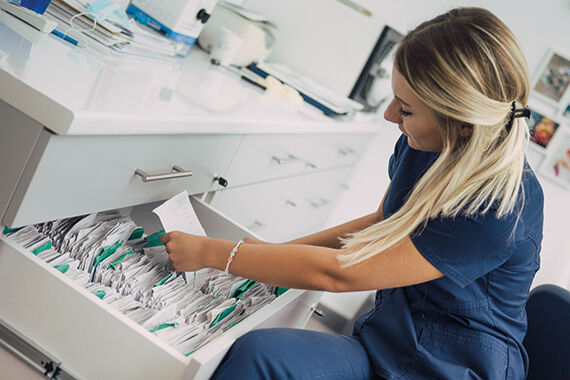How to… hire and work with GP assistants

This site is intended for health professionals only

The role of the GP assistant is to support GPs – and the evidence suggests it is working. Dr Pipin Singh explains why GP assistants are worthy of PCNs’ attention
The GP assistant (GPA) role was designed to help GPs perform more efficiently by taking over routine administrative and clinical tasks.
The evidence suggests the role has been successful.
There is improved patient access and a better flow of patients through the system. GPs are less likely to get tied up in administrative tasks that can slow clinical work.
The evidence also suggests financial savings by having GPAs undertake tasks such as insurance reports. And there is improved job satisfaction, and thus retention, of both GPs and GPAs.
What a GPA role looks like
The GPA could be an existing member of the practice team or someone who is recruited externally.
The ideal GPA will have excellent communication skills and will recognise how good communication is crucial in improving patient safety and outcomes.
They must be willing to learn and develop, and able to recognise when they need support.
A full-time GPA post is usually 37 hours with a Band 3-4 salary on the Agenda for Change scale.
GPAs are expected to adhere to practice policy and ensure their own ongoing professional development by attending training and annual updates, and undertaking an annual appraisal with a GP mentor. They may also be required to maintain a portfolio.
They are expected to be aware of professional boundaries and to report any concerns about their role, either to their PCN-appointed mentor or within the practice to a GP partner or practice manager.
Training
There are two routes to becoming a GPA. Both follow a national competency framework of five key domains with 58 competencies:
For those who want a formal certification of training, Health Education England (HEE) has an accredited training programme, which takes six to nine months to complete.
Or GPAs can receive on-the-job training in the practice with a GP mentor who follows the national competency framework. There are pros and cons to both routes, but the ideal is a combination of the two. The HEE training pathway will require the GP mentor to provide structured training similar to that of a GP registrar and be aware of portfolio requirements plus any mandatory university sessions.
How can a GPA support the practice?
The practice can decide on the specifics of a GPA role, but the general aim is that a GPA will undertake tasks that will ease the clinicians’ workload.
They might support healthcare assistants performing venepuncture and BMI checks. They could carry out basic observations and check BPs and blood glucose readings. Another task might be to dip urines and present the findings.
Additional patient contact might be preparation work before the GP appointment. This would include taking a basic history – noting the presenting complaint and any relevant history, such as drugs, family and social history – then presenting the case.
Any queries after the consultation from the patient could be addressed to the GPA.
The GPA role includes administrative tasks such as extracting information from clinical letters and coding the data, attending to referral paperwork and completing insurance reports.
The GPA can also liaise with care navigation teams, social prescribers and pharmacists. They can attend multidisciplinary team (MDT) meetings and share patient concerns. The partnership is responsible for the decisions that GPAs make.
The GPA role can be adapted for each practice and therefore can be very valuable. Whatever the GPA is asked to do, they must be supported and given ample opportunity to debrief with their GP mentor.
Dr Pipin Singh is a GP partner and trainer in Wallsend, Tyne and Wear